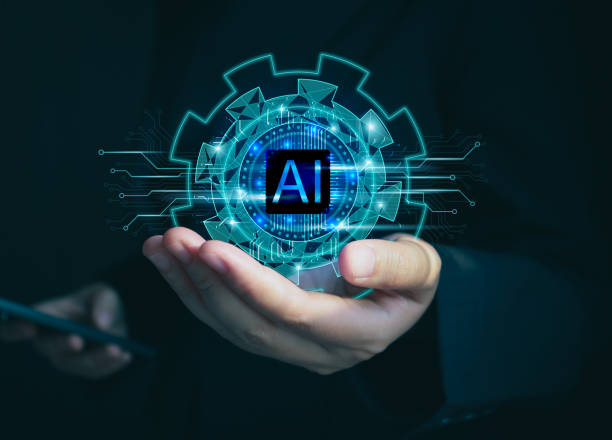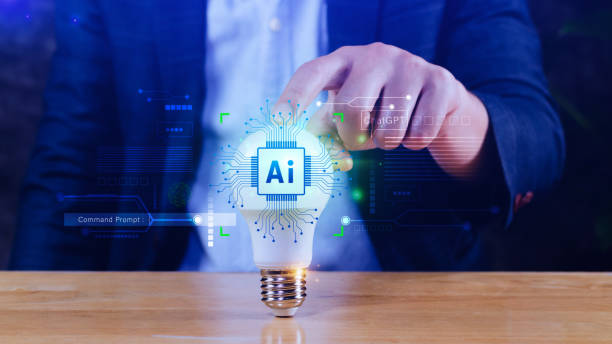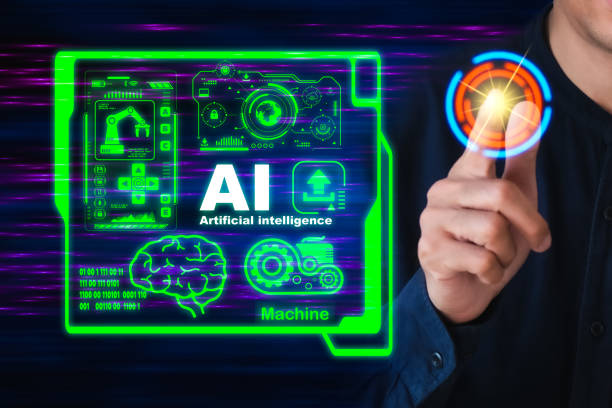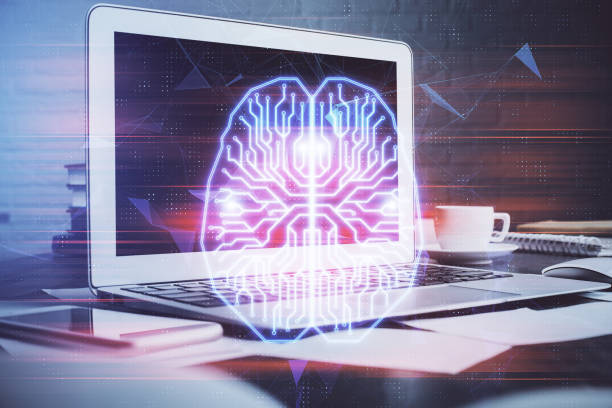Understanding AI Robots: What They Are and Their Applications

In today’s world, the term “AI robot” is increasingly heard.
But what exactly is an AI robot? Simply put, an AI robot is a physical or software machine that uses artificial intelligence algorithms to perform tasks that traditionally require human intelligence.
These tasks can include learning, reasoning, problem-solving, and understanding natural language.
For example, factory robots that package goods are an example of an AI robot.
AI robots have widespread applications in various industries.
In the #manufacturing industry, smart robots can automate production lines and increase efficiency.
In the #customer_service sector, chatbot robots can answer customer questions and provide support.
In the #healthcare sector, surgical robots can perform complex surgeries with high precision.
Also, in #space_exploration, smart robots can help collect information and conduct experiments in hazardous environments.
AI robots have the potential to transform many aspects of our lives. For more information, you can visit the Wikipedia page.
Did you know that customers’ first impression of your company is your website? Multiply the credibility of your business with a powerful corporate website from Rasaweb!
✅ Custom and eye-catching design tailored to your brand
✅ Improved user experience and increased customer attraction
⚡ Get a free consultation!
Main Components of an AI Robot: Examining Hardware and Software

An AI robot consists of two main parts: hardware and software.
Hardware includes the physical components of the robot, such as sensors, motors, and processors.
Sensors collect information from the environment and transmit it to the robot.
Motors are used to move the robot and perform physical tasks.
Processors are responsible for processing information and executing artificial intelligence algorithms.
There are many smart robots that can perform simple tasks in the best possible way.
Software includes artificial intelligence algorithms, the operating system, and application programs.
AI algorithms allow the robot to learn, reason, and make decisions.
The operating system provides an environment for running the software.
Application programs define the specific tasks that the robot should perform.
For example, an AI robot designed for facial recognition needs a camera (sensor), a processor to process images, and facial recognition algorithms (software).
Coordinated collaboration between hardware and software is essential for the proper functioning of an AI robot.
Types of AI Algorithms Used in Robots

Various artificial intelligence algorithms are used in robots, each suitable for specific tasks.
Machine learning is one of the most widely used algorithms, which allows the robot to learn from data and improve its performance.
Deep learning is a type of machine learning that uses artificial neural networks to process complex data.
For example, an AI robot can navigate well in an environment it has never been in before using this algorithm.
Natural language processing (NLP) allows the robot to understand and respond to human language.
Computer vision allows the robot to see and interpret images.
Planning allows the robot to plan a series of actions to achieve a specific goal.
Choosing the right algorithm depends on the type of task the robot needs to perform.
For example, an AI robot designed to chat with users needs NLP algorithms, while an AI robot designed for self-driving needs computer vision and planning algorithms.
| Algorithm | Application |
|---|---|
| Machine Learning | Pattern recognition, prediction |
| Natural Language Processing | Understanding and generating language |
| Computer Vision | Image recognition, facial recognition |
Applications of AI Robots in Various Industries

As previously mentioned, AI robots have widespread applications in various industries.
In the #automotive industry, smart robots can automate production lines and increase product quality.
In the #agriculture industry, smart robots can help farmers plant, maintain, and harvest crops.
In the #education industry, smart robots can help students as private tutors.
AI robots also have many applications in areas such as #rescue, #security, and #entertainment.
In general, AI robots have the potential to improve efficiency, reduce costs, and increase safety in many industries.
With further advances in artificial intelligence, the applications of smart robots are expected to expand in the future.
AI robots help us to do difficult tasks more easily and increase productivity.
Are you dissatisfied with the low sales of your online store?
Rasaweb is your solution for having a professional and high-selling online store.
✅ Significant increase in sales and revenue
✅ Easy and enjoyable shopping experience for customers
⚡ Get a free consultation from Rasaweb right now!
Advantages and Disadvantages of Using AI Robots

Using AI robots has many advantages.
Smart robots can work continuously and without fatigue, which leads to increased productivity and reduced errors.
AI robots can work in dangerous and inaccessible environments for humans, which increases safety.
Smart robots save time, increase accuracy, and require less human labor.
However, there are also disadvantages to using AI robots.
The initial cost of purchasing and maintaining smart robots can be high.
Replacing human labor with robots can lead to job losses.
There are also concerns about the security and privacy of information collected by smart robots.
AI robots need careful planning and maintenance to function properly.
Challenges Facing the Development and Expansion of AI Robots

The development and expansion of AI robots also face challenges.
One of the main challenges is the development of artificial intelligence algorithms that are able to learn, reason, and make decisions in complex and unpredictable situations.
Another challenge is the development of hardware that is capable of supporting complex AI algorithms.
AI robots need powerful sensors and processors.
In addition, ethical and legal issues are also raised regarding the use of AI robots.
For example, who is responsible for damages resulting from the mistakes of smart robots? How can the misuse of smart robots be prevented? Answering these questions requires the development of appropriate laws and regulations.
AI robots can help humanity but must be used properly.
The Future of AI Robots: What to Expect

The future of AI robots looks very bright.
With the ever-increasing advances in artificial intelligence and robotics, smart robots are expected to play a more important role in our lives in the future.
AI robots can help us with daily tasks and improve the quality of life.
It is expected that smart robots will be able to perform more complex tasks in the future and will be used in more areas.
For example, smart robots can help humans as doctors, lawyers, or teachers in the future.
It is also expected that smart robots will be able to interact with humans more naturally and effectively in the future.
However, it is necessary to seriously consider the ethical and legal issues related to the use of smart robots in order to prevent the misuse of this technology.
| Industry | Potential Applications |
|---|---|
| Healthcare | Remote surgery, elderly care |
| Education | Private tutor, creating educational content |
| Services | Customer support, transportation services |
The Impact of AI Robots on the Labor Market: Examining Opportunities and Threats

The entry of AI robots into the labor market will have significant impacts.
On the one hand, AI robots can increase productivity and reduce costs, which can lead to the creation of new job opportunities in areas related to the development, maintenance, and use of robots.
AI robots need specialists who can program and manage them.
On the other hand, replacing human labor with robots can lead to job losses in some industries.
Especially jobs that require repetitive and routine skills.
To mitigate the negative effects of these changes, governments and organizations need to implement programs to train and empower the human workforce so that individuals can acquire new skills and prepare for new jobs.
AI robots should not cause a crisis in the labor market.
Did you know that your company’s website is the first point of contact for 75% of potential customers?
Your website is the face of your brand. With Rasaweb’s corporate website design services, create an online presence that earns customer trust.
✅ Create a professional and lasting image of your brand
✅ Attract target customers and increase online credibility
⚡ Get a free consultation from Rasaweb experts!
Ethical Aspects of Using AI Robots

The use of AI robots is associated with several ethical aspects.
One of the most important of these aspects is accountability.
If a smart robot makes a mistake, who is responsible? The robot manufacturer, the programmer, or the user? These questions require careful discussion and review.
AI robots should not cause harm to humans.
Another ethical aspect is privacy.
Smart robots typically collect a lot of information about users.
How can this information be protected and prevent its misuse? There are also concerns about discrimination.
If a smart robot is designed based on discriminatory algorithms, it can lead to unfair results.
AI robots should be designed in a way that respects fairness and equality.
Paying attention to these ethical aspects is necessary for the responsible and safe use of AI robots.
How to Build an AI Robot: A Step-by-Step Guide

Building an AI robot can be a challenging but exciting project.
The first step is to define the robot’s purpose.
What should the robot do? Once the purpose is clear, you need to choose the right hardware.
This hardware can include an Arduino board, sensors, motors, and other electronic components.
The next step is to write the robot’s software.
This software should include artificial intelligence algorithms, the operating system, and application programs.
You can use programming languages such as Python to write the software.
After writing the software, you need to upload it to the robot and test the robot.
Finally, you need to adjust the robot to have the desired performance.
Building an AI robot requires technical knowledge and patience.
Frequently Asked Questions
| Question | Answer |
|---|---|
| What is an AI robot? | An AI Robot is a machine capable of understanding the environment, reasoning, learning, and making decisions to perform tasks independently. |
| What is the difference between regular robots and AI robots? | Regular robots perform repetitive tasks based on pre-programming, while AI robots can learn from experience, interact dynamically with the environment, and even behave in a way that resembles human intelligence. |
| What are the main applications of AI robots? | They are used in industries (manufacturing, assembly), medicine (surgery, diagnosis), services (customer support, household), exploration (space, underwater), and many other fields. |
| What technologies are used in the construction of AI robots? | Machine Learning, Computer Vision, Natural Language Processing, Deep Learning, and Robotics are among the key technologies. |
| Can AI robots have emotions? | Currently, robots do not have emotions in the human sense. They can identify and respond to emotions, but they do not experience emotions themselves. |
| What are the main challenges in the development of AI robots? | Safety, reliability, ethics, autonomy, adaptability to complex environments, and natural interaction with humans are important challenges. |
| How do AI robots learn? | They are usually trained using large amounts of data, machine learning algorithms, and deep learning to identify patterns and make decisions. |
| Examples of AI robots in everyday life? | Smart robotic vacuum cleaners, customer support chat robots, self-driving cars, and surgical robots in hospitals. |
| Are AI robots a threat to human jobs? | Some repetitive jobs may be automated, but at the same time, robots can increase productivity and create new jobs in the development, maintenance, and monitoring of these systems. |
| How is the future of AI robots predicted? | They are expected to become smarter, more autonomous, and capable of performing more complex tasks, and to interact more closely with humans in various environments. |
and other services of Rasa Web advertising agency in the field of advertising
Smart Link Building: A creative platform to improve SEO ranking with attractive UI design.
Smart Conversion Rate Optimization: A creative platform to improve increase click-through rate using real data.
Smart Social Media: A creative platform to improve customer behavior analysis with precise audience targeting.
Smart Social Media: An effective tool for online growth with the help of precise audience targeting.
Smart Content Strategy: A dedicated service to grow customer acquisition based on key page optimization.
And more than hundreds of other services in the field of internet advertising, advertising consulting and organizational solutions
Internet Advertising | Advertising Strategy | Advertorial Reports
Resources
What is Artificial Intelligence and what are its applications?
,What is Robotics and what is its application?
,



